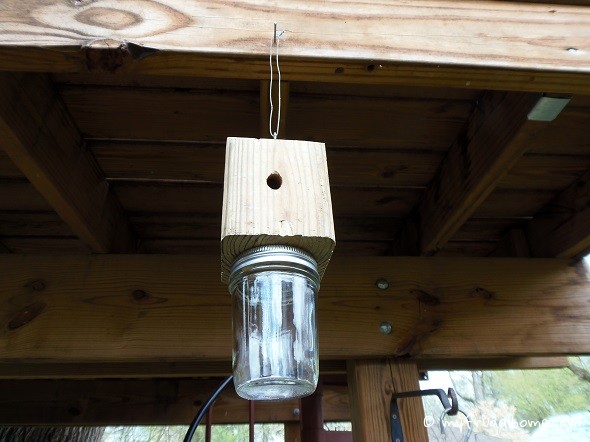
Because eight nails will pierce this bottom, it’s best to use a wood that doesn’t split as easily as cedar does, but you can use the cedar if that’s all you have. (I drilled a 1/4″ pilot hole, then used a coping saw to cut the hole.) I find that any 3/4″ thick pine or even a hardwood works great for the bottom, as it’s protected from the elements. I began with the bottom of the box, which is 3″ square and has a hole the size of the inside diameter of the jar’s ring cut into it. Cedar is extremely easy to plane down quickly. If you can get only 3/4″ thick cedar, this is a great time to practice thicknessing your stock with a handplane. 8″X4″X1/2″ cedar (for the front and top).3″X3″X3/4″ pine, hardwood, or cedar (for the bottom).(Each box will need 20 nails, so be sure you have enough.) Drill 1/16″ pilot holes for each nail to prevent splitting the wood. 1 1/4″ long nails hold everything together. The box itself is about 4″ wide and 5″ tall overall (with a longer board on the back for mounting), but exact dimensions aren’t critical. It’s tall and narrow, just the thing for trapping these bees. I began with a pile of 1/2″ thick cedar scraps and some mason jars. It’s made of cedar, first because cedar is pretty weather-resistant, and also because carpenter bees are very fond of freshly-cut cedar, though mainly the white sapwood.

Most are crude, homemade affairs, but a few are commercially produced. I have seen many varieties of these traps around town. This weakness can be exploited by building a simple trap. Over the course of a summer, they can significantly weaken a wooden structure.įortunately, carpenter bees are easily trapped due to their fatal weakness: they are unable to fly straight up, so if they fly into the top of a tall, narrow cylinder, they can’t get out again. They are especially attracted to fresh wood, and they will even attack treated wood. But carpenter bees also bore holes into exposed wood on decks, porches, and railings. Another common pest here is the carpenter bee, which is not at all aggressive, and a good pollinator to boot.


Down here on the Gulf Coast, we have a lot of insect problems–mosquitoes, termites, fire ants, you name it.


 0 kommentar(er)
0 kommentar(er)
